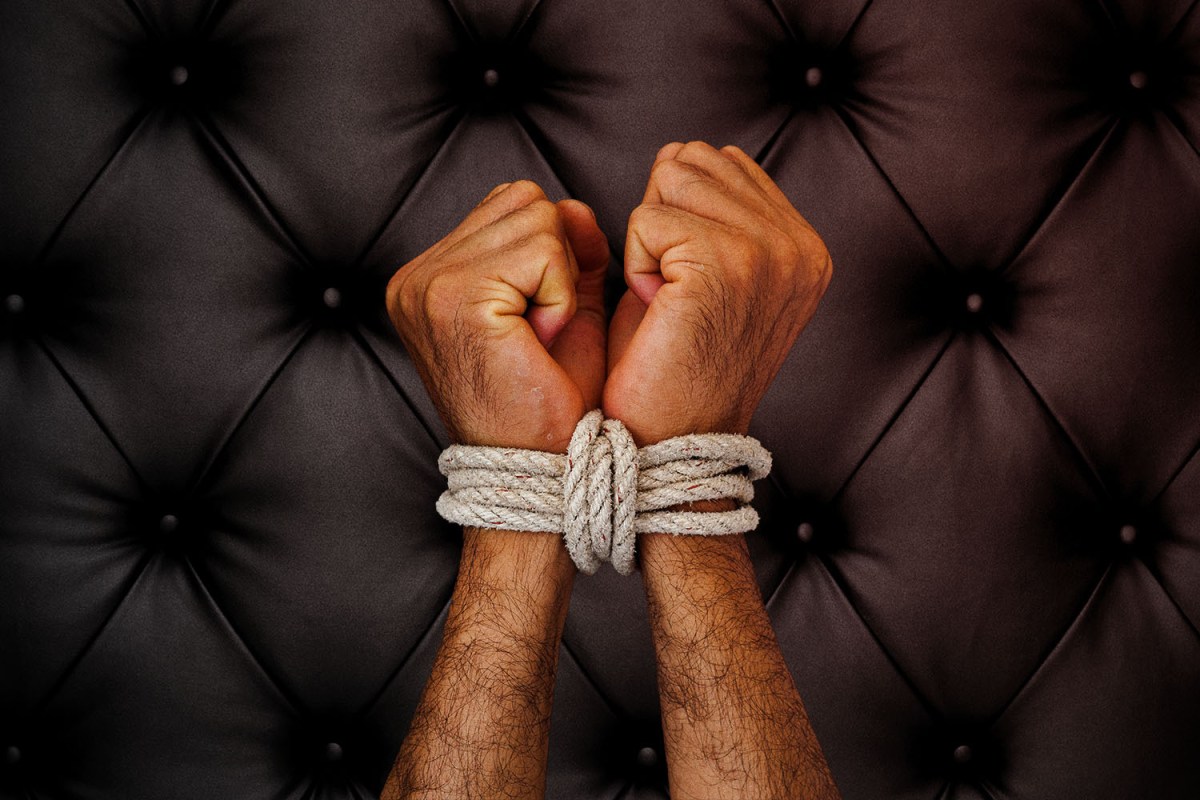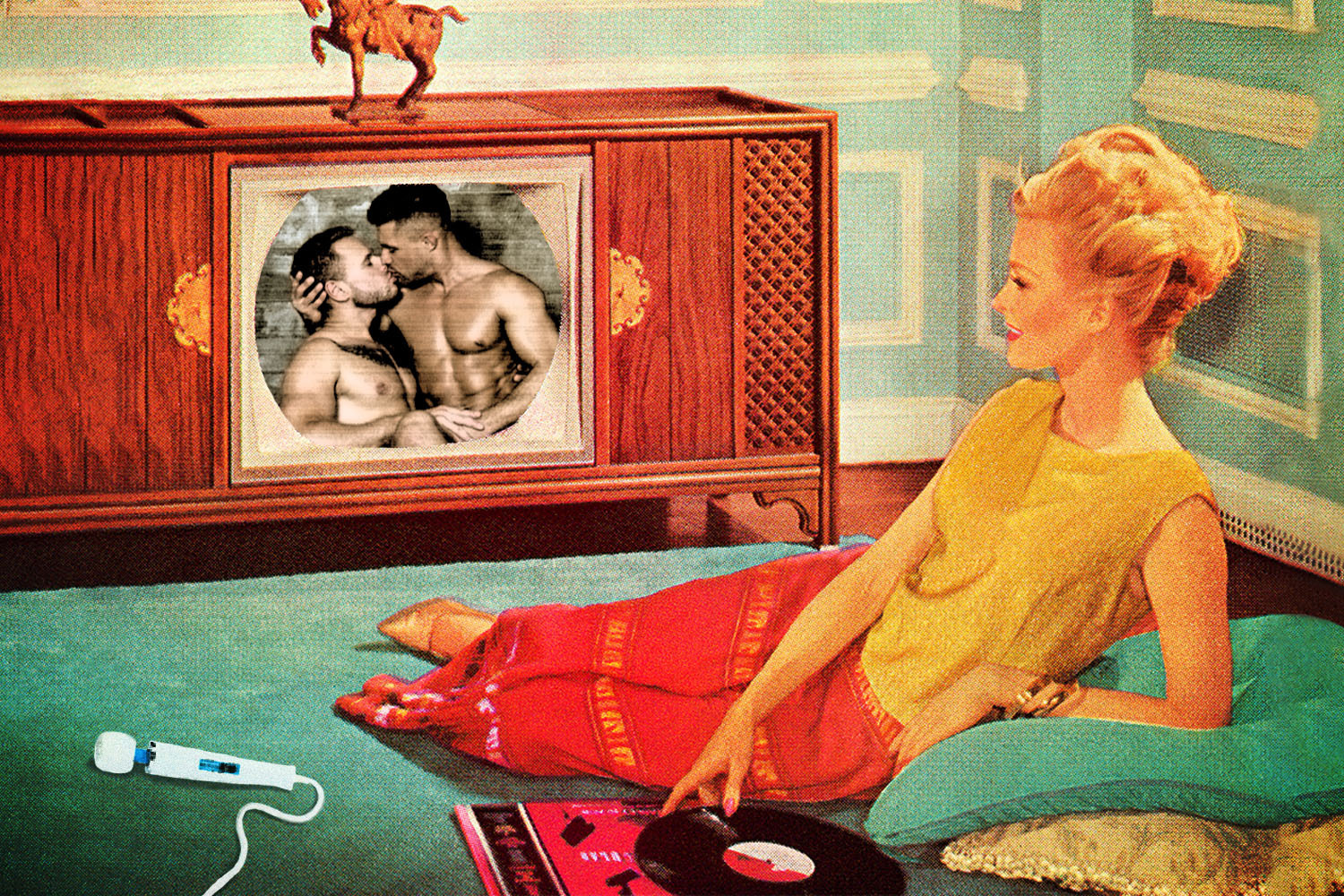Like many aspects of kink culture, bondage has increased in mainstream awareness in recent years, slowly creeping out of BDSM dungeons and sex clubs and making its way to previously vanilla bedrooms near you. Unfortunately, much of that otherwise promising expansion in kink awareness and acceptance can probably be attributed to less-than-realistic media representations — like, say, a certain trilogy about several shades of an achromatic color, or the generally panned Netflix series Bonding.
As a result, misconceptions about bondage — the practice of tying, binding or restraining a partner, often with rope — abound. Meanwhile, as is often true of flawed attitudes surrounding most aspects of sex and sexuality, many of those misconceptions are rooted in patriarchal, heteronormative constructs that reinforce old-school gender roles. For example, many people unpracticed in bondage probably tend to picture a male in the dominant role, tying a submissive female partner.
This harkens back to a broader misconception surrounding dominance and submission in general, one that tends to presume male dominance in a heterosexual dynamic thanks, again, to ye olde patriarchy. The reality, of course, is that many men — including straight ones — actually enjoy being tied themselves, and it’s not always an inherently submissive act. In fact, bondage isn’t even always performed in a sexual context at all, but we’ll come back to that.
Fred Hatt, a renowned bondage instructor with online subscription platform Shibari Study and founder of Anatomie Studio in London, says he’s seen a “dramatic” increase in the number of men assuming the role of the partner who is tied (sometimes called a “rope bunny”), a shift he says has gained significant momentum within the past five or six years. “When I first got into the rope community here, it was all men doing the tying. They were the ones tying women, mostly,” he says. These days, however, the majority of the bondage practitioners he works with actually switch roles.
“Most people are actually tying and getting tied,” Hatt tells InsideHook. While he admits that “men maybe do tie a little bit more than the women,” Hatt suggests it’s probably less out of a lack of desire to be tied than a potentially unconscious tendency to gravitate toward a role gendered stereotypes have coded as more traditionally masculine. “It’s maybe not because they don’t want to be tied — they do want to be tied. It’s maybe just falling into a default role, or what they consider to be a default role.”
Over in America, however, International Educator and Sex Hacker Kenneth Play says he’s often seen more male rope bunnies than there are female riggers to accommodate. “At BDSM parties, there are always more male subs than female doms, so the demand for this type of dynamic is higher than the supply most of the time,” Play tells InsideHook. “This tells us that the assumption that men do not desire dominance is simply not true. In fact, this stereotype might be prohibiting women from developing their skills in the realm of dominance, to the detriment of everyone’s satisfaction.”
Play also recommends switching roles, or at least trying both on for size. “You don’t know if you’ll like something until you try it. And, even if you don’t enjoy it, you will gain a lot of knowledge from experiencing the other side of this dynamic. Control and surrender are complementary energies, and it’s good to get a taste of both.”
Meanwhile, Play adds that it is, of course, “commonly accepted” for men to assume submissive roles within the queer community.
That said, being tied doesn’t necessarily make one inherently submissive, because engaging in any given sexual act does not a sexual identity make. “One of the biggest misconceptions [men have about bondage] is that if they submit to their partner, they are now lowered or submissive,” says Taylor Sparks, erotic educator and founder of Organic Loven, one of the largest BIPOC-owned online intimacy shops. Like sexuality itself, sexual roles and preferences are fluid. “A man can do submissive acts without actually being submissive,” says Sparks.
However, there’s a lot to be gained from exploring and embracing one’s submissive side. “There are many men who willingly give up their ‘power’ and exchange it for a more submissive role,” says Sparks. “Many men spend many hours of the day in full control of themselves and others. For some, quite frankly, it has become stressful and draining. Giving up this ‘control’ can be a way that men release their stress and learn another way of re-centering themselves through bondage.”
But while rope bondage is often erotic, it is not always practiced in an inherently sexual context, and many men may find it has benefits beyond or entirely independent of sexual gratification.
“People think that bondage is by necessity dark and sadistic. However, it doesn’t have to be that way,” says Play. “For some, giving and receiving bondage can be a meditation, where one’s attention is totally focused on the present moment. It can be a rush, a way to experience safe danger, similar to a rollercoaster ride or skiing. It can be performance art, where the top makes the bottom into a living sculpture. It can also be a way of nurturing, and caring for someone, where the ropes become a way to hold the person in a type of embrace.” Meanwhile, he adds, “Bondage is also done sometimes without any sexual stuff involved. It can be an act unto itself.”
Bondage can be many things to many people, both sexual and not. “It can be a very freeing experience. It can be a very cathartic experience. It can be very relaxing,” says Hatt, who adds that more intricate forms of rope bondage require a level of technical skill that some may consider downright nerdy. “It’s very tactile. There’s a lot more to it than just knots.”
Rope bondage can also be an exercise in mindfulness. “Both giving and receiving bondage can really help you focus in on the moment and experience your senses in a very special way,” says Play. “In today’s hyperconnected, always-on world, where screen time dominates most experiences, having a moment to go low-tech and focus on the body is an excellent practice.”
“It can be a very mindful practice,” echoes Hatt. “It can be a very meditative, relaxing thing to do. It’s a very fun, fulfilling thing, both sexually and not.” In fact, Hatt adds that even people who identify as asexual may still enjoy rope bondage as “a way for them to explore touch and sensation, and even just proximity to people, without there being a sexual overtone or undertone.”
Of course, bondage is a practice that takes careful study and training, especially if it’s being practiced in a sexual context. But there’s never been a better time to, as Hatt says, overcome your “hesitation to be vulnerable in space” and learn. Even compared to just five or 10 years ago, resources for beginners interested in bondage are now much more accessible, both online and in studios where experts like Hatt offer lessons at all levels.
“Embrace the fact you don’t know something,” Hatt advises. “It’s quite fun to actually start off at that level and be learning. You’re quite fortunate, actually, to be taught. It wasn’t always that way. The information wasn’t always available the way it is nowadays. So just have fun on the journey.”
And remember: it’s always better to be tied up by rope than by antiquated gender norms.
The Charge will help you move better, think clearer and stay in the game longer. Subscribe to our wellness newsletter today.



























